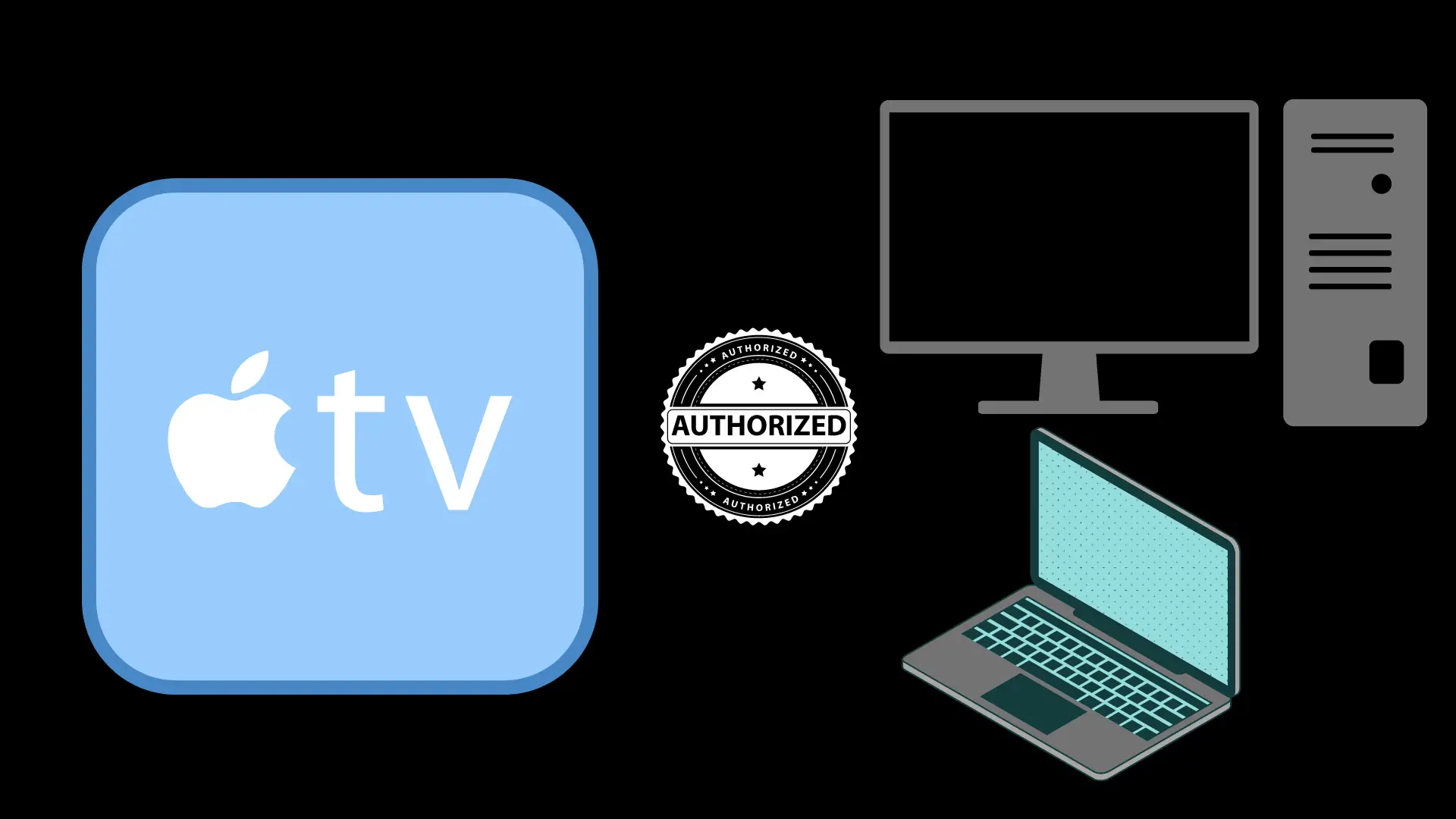
If you’re having trouble with the volume on your Apple TV remote, you’re not alone. It’s a common issue that can put a damper on your entertainment experience.
Fortunately, there are several solutions that can help you get the remote back up and running again. In this article, we’ll provide you with step-by-step instructions on how to troubleshoot and fix the volume problem.
Restart Your Apple TV / Siri Remote
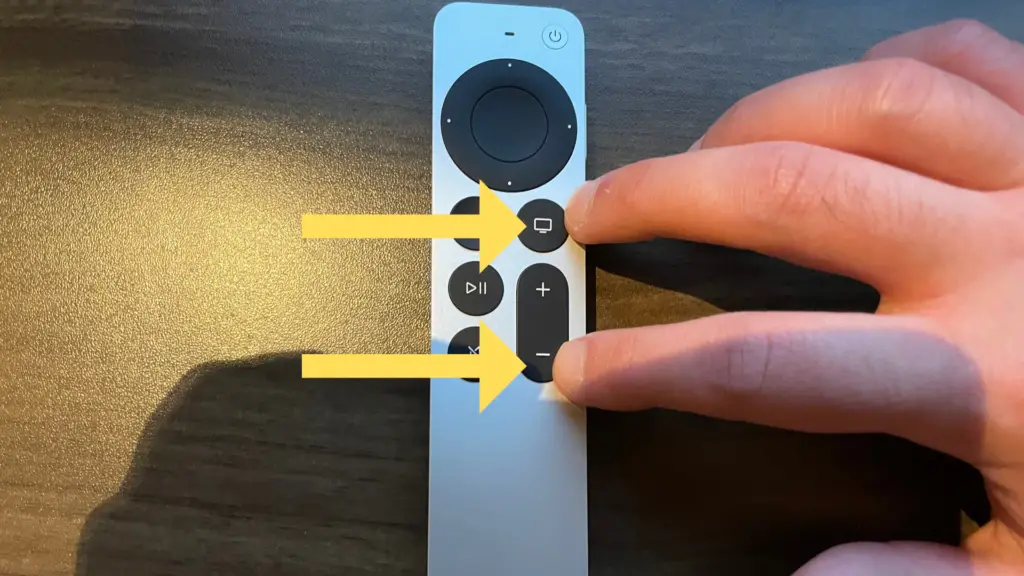
To restart your Apple TV remote, simultaneously press and hold the TV button and the Volume Down button. Keep holding both buttons for roughly five seconds until the status light on your Apple TV switches off and on again.
After that, release both buttons and give it five to ten seconds for a Connection Lost notification to appear on your TV screen. Then, sit tight while your remote restarts. Once it does, a Connected remote notification will appear on the screen, indicating that you can use your remote again.
Set the Volume Control Option on your Apple TV/ Siri remote manually
Although your Apple TV/Siri remote may be synced with your Apple TV, you may still experience trouble controlling the volume if the volume control itself isn’t synced specifically. Here’s how to manually sync your volume control function to your Apple TV:
- Go to Settings, Select Remotes and Devices
- On the Home theater control tab, select Volume control and select “Learn New Device.”
- Use your original TV remote to set up the controls.
Test out the volume button and move on to the next step if the issue still persists.
Charge Your Remote
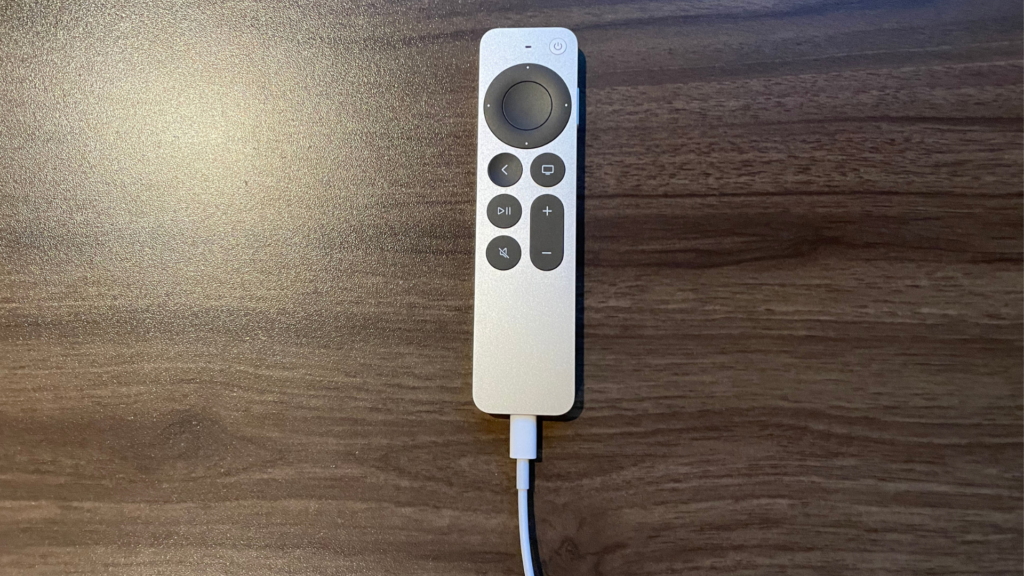
One possible cause could be that its battery is running low. But don’t worry – checking the battery level of your Apple TV remote is a simple process that can be done right from your Apple TV.
To check the battery level of your Apple TV remote, follow these simple steps:
- Open the Settings app on your Apple TV.
- Go to Remotes and Devices.
- Check the remaining battery percentage.
If the battery percentage is low, connect the remote to a charger for at least 30 minutes.
Reboot Your Apple TV
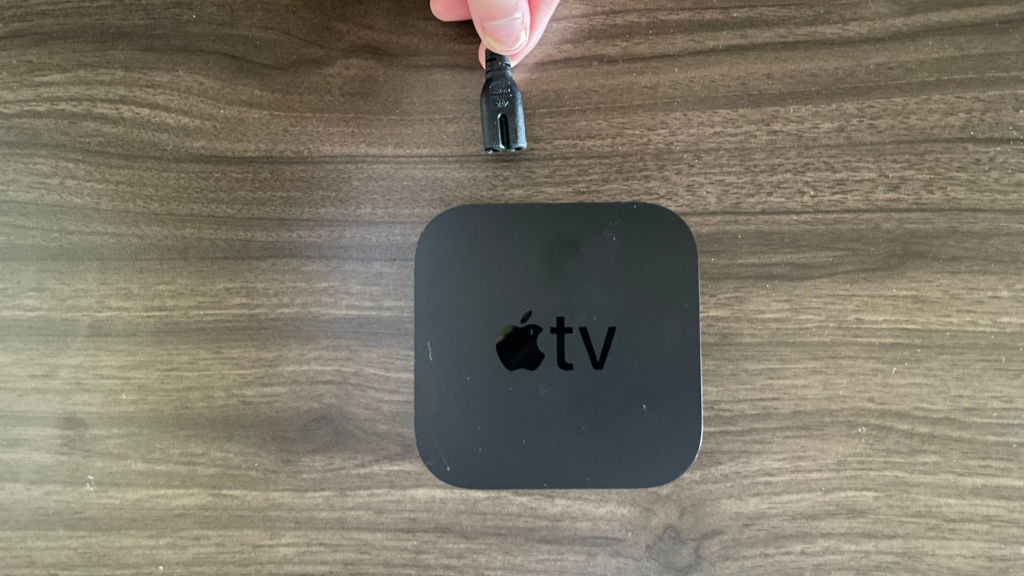
Another solution would be to reboot your Apple TV. To do so, locate the power cord that’s connected to your Apple TV and unplug it from the wall power outlet. Wait for at least six seconds, which should be enough time for the device to fully power down. Then plug the cord back into the outlet and turn your Apple TV back on.
Clean the IR-Sensor on your Apple TV and Remote
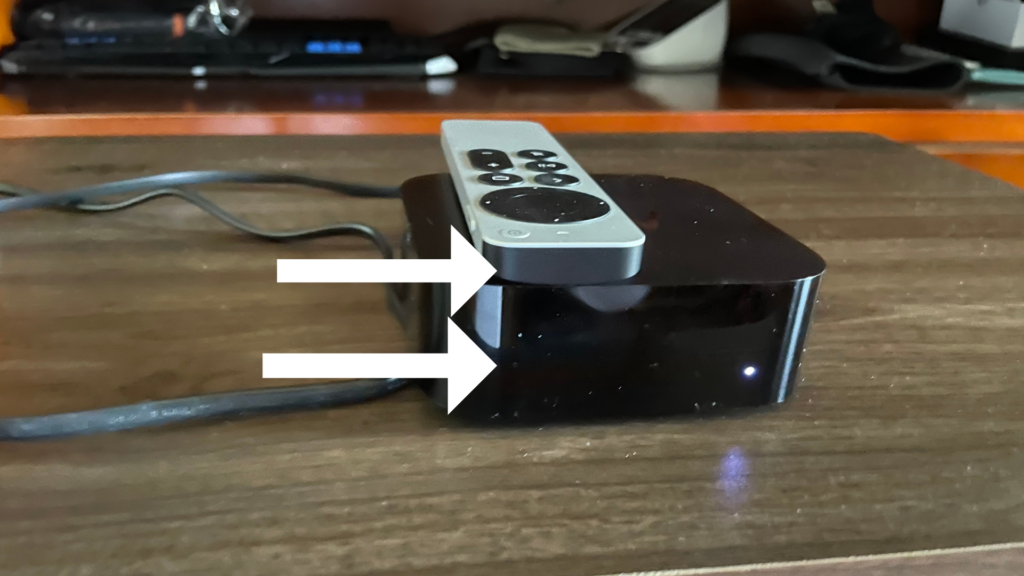
If you’re having trouble with your Apple TV remote’s volume control, it’s possible that the issue may be related to the IR sensors on either the TV or the remote. Over time, dust and debris can accumulate on the sensors, which can interfere with the signal and cause problems with the remote’s functionality.
To check if this is the issue, simply inspect the IR sensor on your TV and the transmitter on your remote to make sure there isn’t anything blocking the signal. Keep in mind that Bluetooth signals will not be affected by this, which could explain why you’re experiencing problems with the volume control specifically.
For example, if your remote seems to work fine for everything except the volume control, it’s possible that the IR sensor on the TV may be blocked by dirt or debris. Alternatively, if the volume control only works intermittently, it could be an issue with the IR transmitter on the remote.
To address this issue, simply use a soft cloth to gently clean the sensor and transmitter, being careful not to scratch or damage the surface. Once you’ve cleaned both components, try using the remote again to see if the issue has been resolved.
Re-pair your Remote
Another potential solution is to try pairing the remote with your Apple TV again. This can help to re-establish the connection between the two devices and get your remote working properly again. Here’s how:
- Start by pointing the remote directly at your Apple TV. Make sure that the remote is about three inches away from the device.
- Press and hold the Back or Menu button and the Volume Up button on the remote for five seconds.
If prompted, place your remote on top of your Apple TV to complete the pairing process. This should re-establish the connection between your remote and your Apple TV and may resolve any issues you were experiencing.
Enable HDMI-CEC
Next, try using an HDMI-CEC connection. This feature takes advantage of the bi-directional communication on an HDMI cable to allow your device to communicate directly with your TV.
First, make sure that your TV or receiver offers HDMI-CEC support. If you’re unsure, check the manual or contact the manufacturer for more information.
Next, confirm that your Apple TV is connected to an HDMI port that supports HDMI-CEC. Again, consult the TV manual to determine which ports support this feature.
Finally, ensure that HDMI-CEC is turned on in the menu of your TV or receiver. This can be a bit tricky, as manufacturers often use different names for HDMI-CEC. Look for a setting that ends in “Link” or “Sync” to enable this feature. Some examples might include “Anynet+,” “BRAVIA Sync,” or “CEC Control.”
- Press the “Menu” button on your Apple TV remote on the home screen.
- Select the cog in the upper right-hand corner if you cannot find your main menu. Once you have opened your Settings screen, click on devices and scroll down.
- To change the available audio and video settings, please scroll to the bottom of the menu and press “audio and video.”
- Select the audio output from the new menu on-screen and assign it to your sound system.
Check for Software Updates
Apple TV always releases updates to ensure that its software is running smoothly. You must check for these updates to keep your devices working perfectly. Here are things you can do.
- Press the Home button on the remote of your Apple TV.
- Click on Settings in the menu window; it’s right next to the hamburger icon.
- If you click on Software Update, you can select Update Software.
- Updates to your Apple TV may be available and automatically downloaded and installed when the software is running. Ensure you remain patient and don’t disconnect the device while updating.
Use iPhone or iPad as a remote
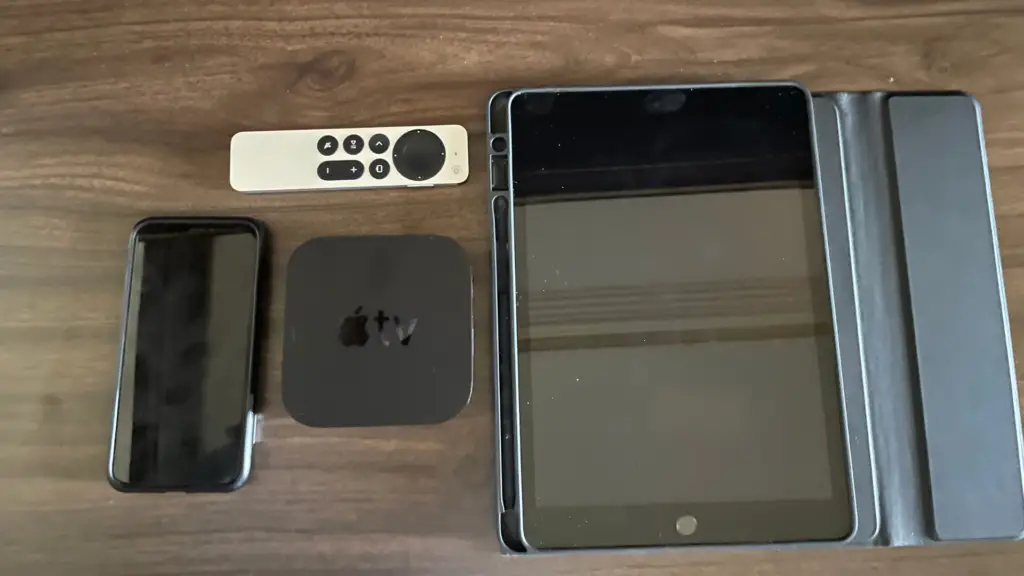
If you have an iPhone or iPad on the same Wi-Fi network as your Apple TV and on the same Apple ID, you can use it as a remote control thanks to the Apple TV Remote app. The process is simple and can be done directly from your device’s Control Center.
To access the Apple TV Remote feature, swipe down from the upper-right corner of the screen on an iPhone X or later, or on an iPad with the latest version of iPadOS. If you have an iPhone 8 or earlier or are using iOS 11 or earlier, swipe up from the bottom edge of the screen instead.
Next, tap the Apple TV Remote icon, which looks like a small remote control. This will bring up a list of available Apple TVs or smart TVs that are connected to the same Wi-Fi network as your iPhone or iPad. Select the device you wish to control.
If you’re prompted to enter a four-digit passcode, follow the onscreen instructions to enter it into your iPhone or iPad. If you have an Apple TV (3rd generation), you can use your Siri Remote or Apple TV Remote to enter the passcode into your Apple TV.
- How to Pair Meta Quest 3 Controllers with Your Quest 3 Headset: A Quick Guide
- How to Charge Meta Quest 3: A Guide to Powering Up Your VR Experience
- How to Cast Meta Quest 3 to Samsung TV: A Step-by-Step Guide
- How To Factory Reset Your Meta Quest 3: A Step-by-Step Guide
- How to Power On and Off the Meta Quest 3



